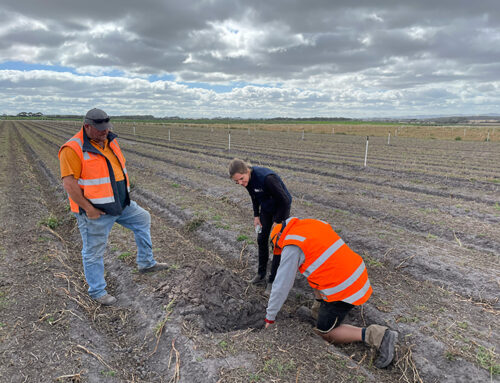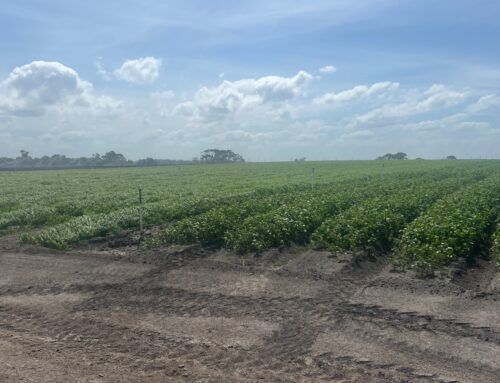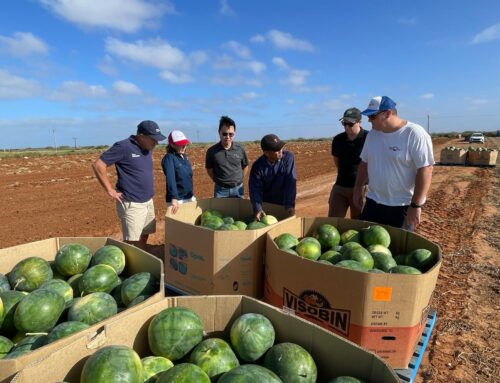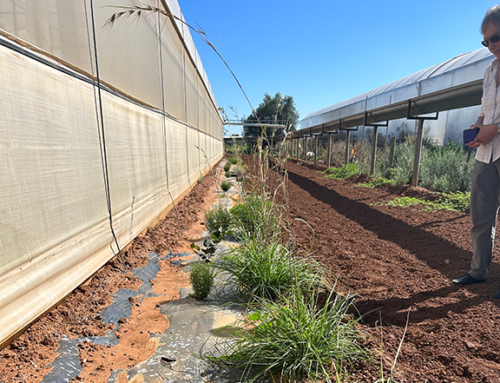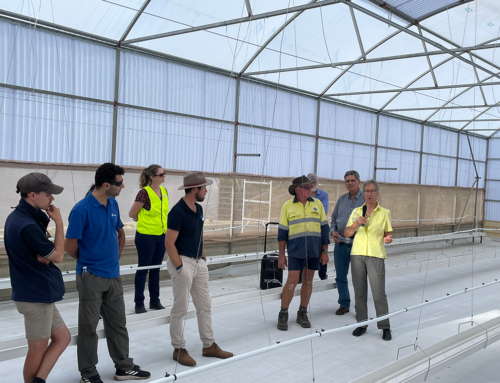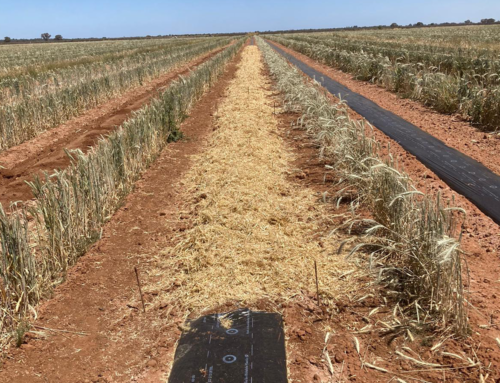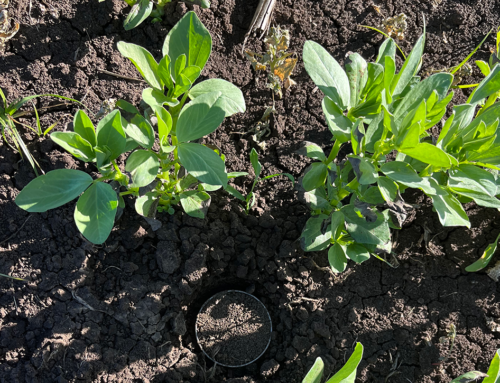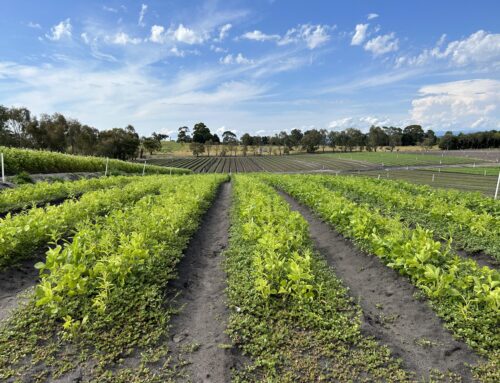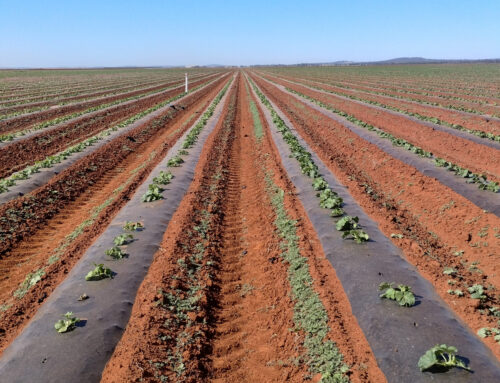The Cowra demonstration site in southern NSW is focussed on improving soil health through cover crops and improved tillage.
A ryecorn cover crop was sown on beds following corn and brassica crops on 4 July 2018. Ryecorn was chosen for its high C:N ratio, high lignin properties (slow to break down) and allelopathic effect (chemical inhibition) on weeds. The high seeding rate (120 kg/ha) outcompeted weeds and provided full ground cover within 50 days in spite of cold, mid-winter conditions. There were no fertiliser, no herbicides, and no irrigation costs – a plus for Ed and James Fagan. This cover crop was terminated on 24 October 2018, and rolled down to provide 6 t/ha dry matter ground cover for the early summer months (Figure 1).

Figure 1: Overview of the paddock control and treatment options
Wildeye moisture monitors assess the volumetric water content (VWC) in the soil, which is simply the ratio of water volume to soil volume. They are relatively inexpensive and simple to install, and readings are automatically uploaded to the internet. The sandy loam soil in Cowra can hold approximately 40 mm available water in 30 cm of topsoil.
Wildeyes were installed in both the control area and the ryecorn cover crop areas. A 24 mm storm rain event on the night of 11 January 2019 showed a big difference in infiltration rates and soil moisture retention between fallow versus ground cover (Figure 2 and Figure 3).
The control (fallow) area showed slow and minimal infiltration during the rain event; much of the storm rain would have run off the beds into the furrows. On the beds, no rain was able to percolate down to the 20 cm depth, and with 40 degree temperatures the small amount stored in 0–15 cm soil was lost in less than 3 days (Figure 2). Summer surface moisture germinates weeds and evaporates quickly leaving little economic benefit.
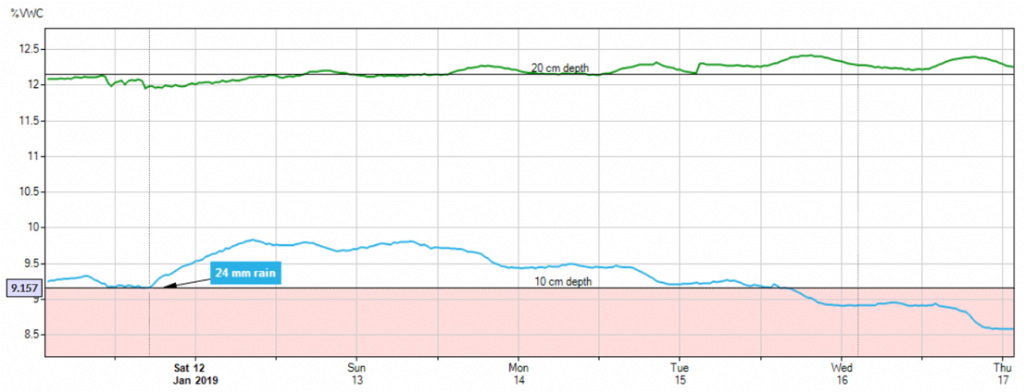
Figure 2: Volumetric water content in the control (fallow) area
The ryecorn cover crop area showed rapid infiltration (6 percentage points VWC in 1.5 hours) during rain, then a gradual loss with net positive moisture five days later. There was also minimal difference between day and night soil moisture loss (Figure 3). Stored water at depth lasted for weeks saving irrigation costs and benefiting the next cash crop! This is a fantastic result for Ed and James during a dry, hot and long end to summer in 2019.
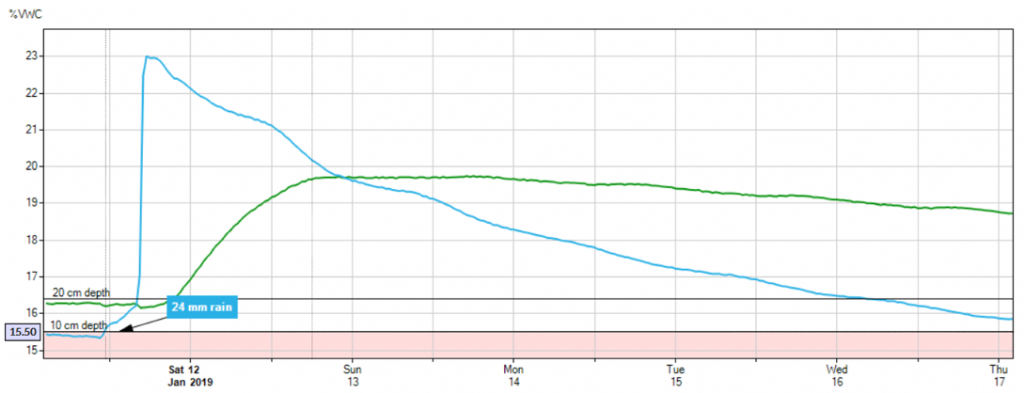
Figure 3: Volumetric water content in the ryecorn cover crop area

